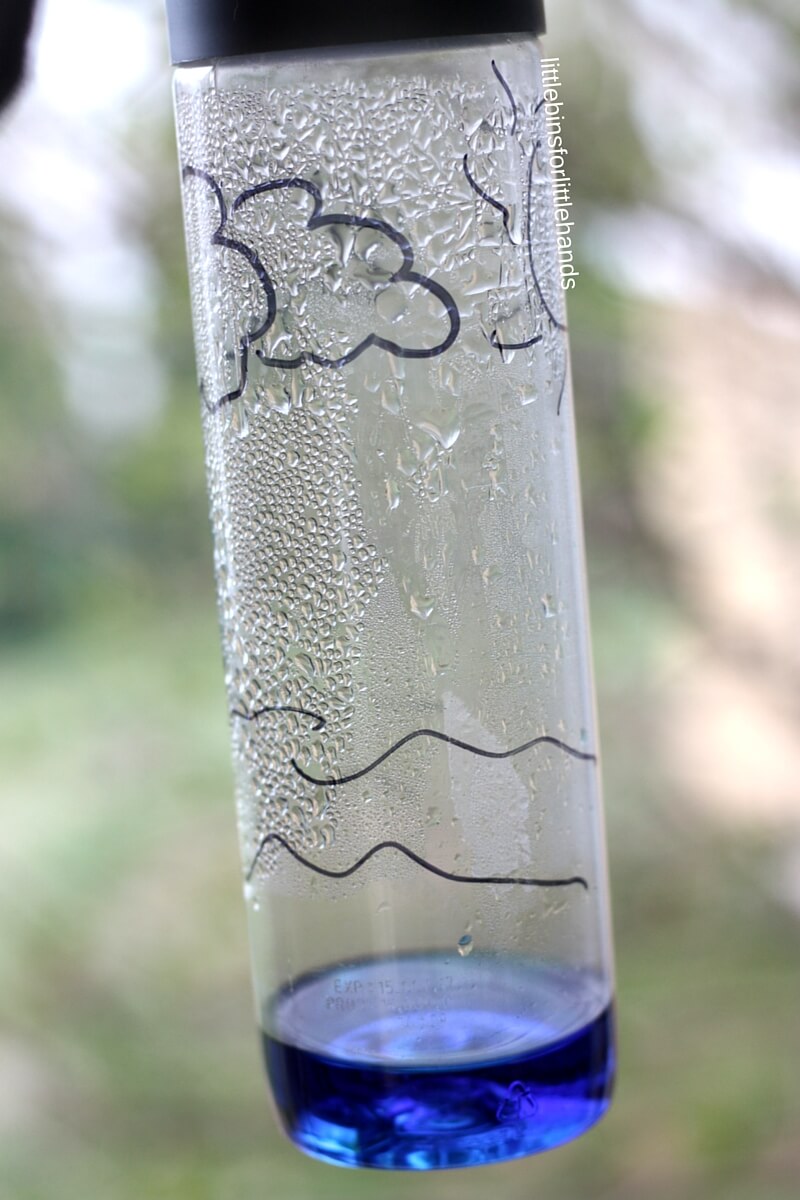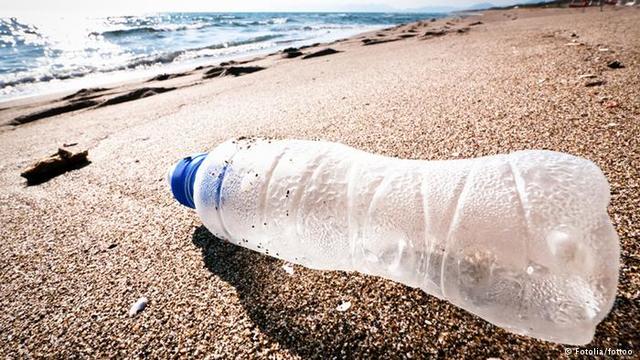45 water cycle in a bottle
The Water Cycle for Adults and Advanced Students Completed Earth's water is always in movement, and the natural water cycle, also known as the hydrologic cycle, describes the continuous movement of water on, above, and below the surface of the Earth. Water is always changing states between liquid, vapor, and ice, with these processes happening in the blink of an eye and over millions of years. Note: This section of the Water Science School discusses ... Water Cycle in a Bottle - YouTube Watch how to do the "Water Cycle in a Bottle" activity.
Water Cycle in a Bag | Science Mission Directorate Observe and investigate the water cycle by confining the processes of the water cycle to a bag. The activity pack includes resources for preK-8 learners. There are separate activity sheets for different learning levels and there is also an expanded version of the activity included for more advanced learners (grades 6-8) to explore WHAT evaporates and what is "left behind" in

Water cycle in a bottle
Miniature Water Cycles - Utah Education Network Remove the base by sliding a butter knife between the base and bottle and pushing. Glue can be removed with a sharp knife. Do not cut the bottom of the bottle. Simply remove the base. Step 2.Review the three parts of the water cycle with students. Tell students they will be building their own miniature water cycle in a bottle. Step 3. Water cycle in a bottle - WikiEducator Building your own water cycle in a bottle Procedure: 1. Cut the bottom off of the soda bottle (approx. 60mm); don't throw out! 2. Place soda bottle on its side 3. Put the soil inside, about 1/3 full 4. Plant 2-3 plants inside 5. Tightly tape back on the bottom that was cut off in Step #1 6. The Water Cycle | Precipitation Education - NASA Frequent and detailed measurements help scientists make models of and determine changes in Earth's water cycle. The water cycle describes how water evaporates from the surface of the earth, rises into the atmosphere, cools and condenses into rain or snow in clouds, and falls again to the surface as precipitation.
Water cycle in a bottle. Water Cycle In A Bottle - Little Bins for Little Hands Apr 26, 2016 - Explore the water cycle for kids with this easy water cycle in a bottle activity. A simple way to introduce evaporation, condensation to young learners. Pinterest. Today. Explore. When autocomplete results are available use up and down arrows to review and enter to select. Touch device users, explore by touch or with swipe gestures. 11 of the best water bottles for cycling - BikeRadar The best standard water bottles for cycling. Tacx Shanti Twist: £5. CamelBak Podium Dirt Series Chill: £18. Fabric Gripper 750ml: £10. Osprey Hydraulics SoftFlask: £18. Water Cycle in a Bottle Mini Lesson & Follow Up Activities Description. Bring the Water Cycle to Life with this cool "Water Cycle in a Bottle" Hands on Lesson! Your students will have so much fun creating their own water biome and observing each step of the water cycle. This mini lesson includes the step-by-step process for creating a water biome as well as a simple set of observation question ... Water cycle in a jar - Experiment Archive In hot water, as in this case, a larger proportion changes to a gaseous state than in cold water. There are now two things in the bottle's "atmosphere"; water vapor and the gas mixture called air. Water vapor, i.e. water in a gaseous state, is a natural part of the atmosphere and is sometimes considered a part of air.
The Water Cycle [Illustrated & Explained] The water cycle is the process by which water is moved continually around and among the Earth's surface, oceans, and atmosphere. It is a vital part of the climate system that sustains life on our planet. The water cycle involves many physical and chemical processes, such as evaporation, transpiration, condensation, precipitation, infiltration ... Water Cycle in a Bottle Science Experiment Setting Up for the Water Cycle in a Bottle Remove the labels from the bottles. Add a drop of blue food coloring to each bottle and fill about 1/3 of the way with water. Screw the caps on tightly. Doing the Water Cycle in a Bottle Experiment Let the kids decorate their bottles with clouds, water and rain drops. Create a model water cycle inside a bottle! - YouTube Create a model water cycle inside a bottle! 6,818 views Mar 31, 2020 66 Dislike Share Save Green Mountain Conservation Group NH 137 subscribers Subscribe In this video, we show you how to create a... 5 Water Cycle Experiments Your Kids Will Love Add a drop of blue food coloring to the bottle and fill about 1/3 of the way with water. Screw the cap on tightly. Turn the bottle upside down inside a cup. Place a couple of ice cubes on top of the bottle and set it in a sunny location. Check the bottle after about an hour. Water Cycle Lapbook
Water Cycle in a Bottle with Free Worksheets - My Graceful Chaos This water cycle in a bottle activity will help your students visualize the water cycle. Students get to create their own water biome and see the water cycle come to life right before their eyes! Spring time is always the best time of the year to teach about the water cycle. We learned about this topic in class first, read about, had some ... Pop Bottle Water-Cycling Terrarium - Science World Lightly lightly water the seeds and soil. Then, put the cap on the bottle. Keeping the bottle sideways, place in a somewhat sunny spot. Students can observe how their plants grow and watch the water cycle. Have students spray with water only once the soil becomes dry again. Water Cycle in a Bottle - Water Cycle Activity for Earth Day Fill the bottom of the bottle with 1/2 an inch of water. Add a few drops of blue food coloring to the water. Seal the bottle tightly and place it in a sunny, warm location. In a day or two, observe the jar. The kids will be able to see the water in the bottle suspended in different parts of the water cycle. Life Cycle Of A Plastic Water Bottle | My Own Water Such as water bottles, shopping bags, and even carpeting items. The following steps offer a guide to how this recycling process works. · Initially, everything that is going to be recycled is put on a disk screen for sorting and separation. The separation of plastic water bottles mainly relies on category and type.
Rain in a Bottle Experiment - Playing With Rain Pour the hot water into a bottle and add some food coloring (optional). Flip the lid upside down on the top of the bottle and put some ice cubes on it. Let it sit for 5-10 minutes and watch as a cloud begins to form inside the bottle. Watch for condensation to form little water droplets that will rain down inside the bottle!
Water Cycle in a bottle - TeacherTribe.world Directions: Draw clouds and sun on the upper part of the bottle. Draw land and water on the lower part, using the marker. Allow it to dry. Take half glass of water. Add a few drops of blue food colouring into it and mix well. Pour the blue coloured water into the bottle. Place the bottle by a window and observe what happens over a few hours.
Water Cycle In A Bottle - Little Bins for Little Hands The liquid water goes up into the air in the form of steam or vapor (water vapor). When this vapor hits cooler air it changes back to its liquid form and creates clouds. This part of the water cycle is called condensation.
Water Cycle Activities for Middle School Science The Water Cycle Inquiry Lab is a hands-on activity that is differentiated for advanced, on-level, and modified middle school students. Students will create a model to demonstrate how water moves through the water cycle. The Water Cycle Inquiry Lab includes a brief reading passage, comprehension checks, hands-on activities, reflection questions ...
Cloud in a Bottle - Science World Pour about 60ml of rubbing alcohol into an empty bottle and seal it with the prepared stopper. Tilt and shake the bottle so that the alcohol coats the entire inside. Attach the bike pump and add four pumps of air. Quickly remove the stopper and watch the cloud form. To repeat the effect, reattach the stopper and add more air Safety Tips
Water cycle | National Oceanic and Atmospheric Administration The water cycle on Earth. Water is essential to life on Earth. In its three phases (solid, liquid, and gas), water ties together the major parts of the Earth's climate system — air, clouds, the ocean, lakes, vegetation, snowpack, and glaciers offsite link. The water cycle shows the continuous movement of water within the Earth and atmosphere.
Cloud in a bottle 1 - experimentarchive.com Pour about 2 cm (1 in) of room temperature water into the bottle. Step 2 Light a match, and throw it in the bottle. Do the same with a second match, and then with a third. Then directly screw the cap back on. Step 3 Squeeze the bottle hard - no cloud. Step 4 Relieve the pressure in a quick manner - a cloud!
Water Cycle In A Bag - Little Bins for Little Hands The liquid water goes up into the air in the form of steam or vapor (water vapor). This is a great example of changes in state of matter! When this vapor hits cooler air it changes back to its liquid form and creates clouds. This part of the water cycle is called condensation.
⛈️ 2 FUN, Hands-on Water Cycle Activities for Kids The first simple activity is a Water Cycle In A Bottle. It's a super simple way to show children how the water cycle works also while recycling a plastic bottle. Children will be ecstatic to watch water turn to gas, turn back into a liquid, and circle back around to end up in the bottom of the bottle. Then it starts all over again.
Water Cycle In A Bag | Science Experiment For Kids Water Cycle in a Bottle If you find that the ziplock bag doesn't stick to the window and falls off, you can perform the water cycle experiment using a bottle too. Just fill a plastic bottle with ⅓ cup of water dyed blue with food coloring and screw the cap on tight. Turn the bottle upside down and place it inside a transparent plastic cup.
The Water Cycle | Precipitation Education - NASA Frequent and detailed measurements help scientists make models of and determine changes in Earth's water cycle. The water cycle describes how water evaporates from the surface of the earth, rises into the atmosphere, cools and condenses into rain or snow in clouds, and falls again to the surface as precipitation.
Water cycle in a bottle - WikiEducator Building your own water cycle in a bottle Procedure: 1. Cut the bottom off of the soda bottle (approx. 60mm); don't throw out! 2. Place soda bottle on its side 3. Put the soil inside, about 1/3 full 4. Plant 2-3 plants inside 5. Tightly tape back on the bottom that was cut off in Step #1 6.
Miniature Water Cycles - Utah Education Network Remove the base by sliding a butter knife between the base and bottle and pushing. Glue can be removed with a sharp knife. Do not cut the bottom of the bottle. Simply remove the base. Step 2.Review the three parts of the water cycle with students. Tell students they will be building their own miniature water cycle in a bottle. Step 3.











0 Response to "45 water cycle in a bottle"
Post a Comment